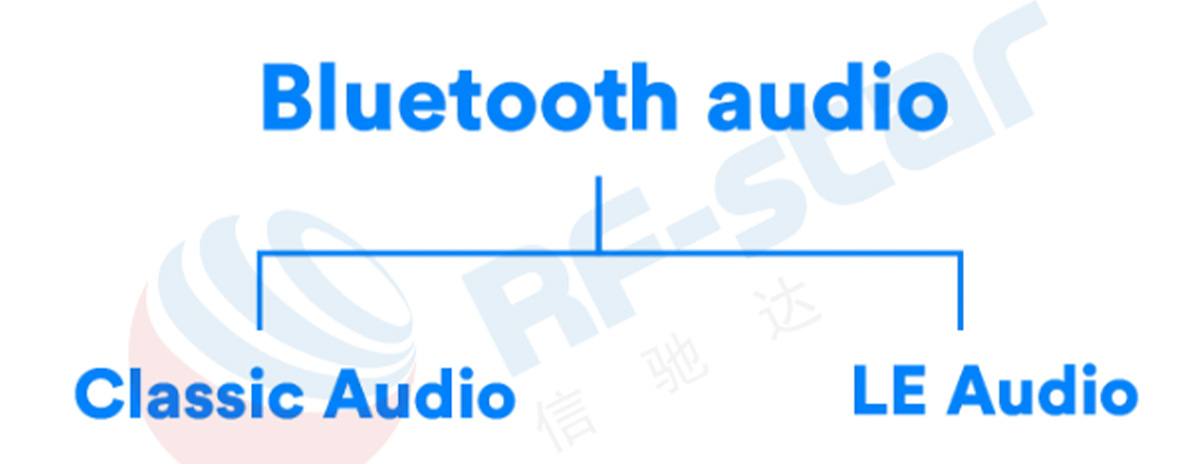
The SIG released a new generation of Bluetooth Core Specification 5.2 at CES2020 in Las Vegas, including LE ISOCHRONOUS, LE PWOER CONTROL, LE ATTRIBUTE PROTOCOL. This article talks about LE ISOCHRONOUS.
1. BT 5.2 LE AUDIO Market
As we all know, before BT 5.2, Bluetooth audio transmission used the classic Bluetooth A2DP mode for point-to-point data transmission. Now the emergence of Bluetooth LE Audio has broken the monopoly of classic Bluetooth on the audio market. At the 2020 CES, SIG announced that the new Core Specification BT 5.2 supports multi-stream Audio which will enable the transmission of multiple, independent, synchronized audio streams between an audio source device, such as TWS headphones, multi-room audio synchronization. LE Audio will also add Broadcast Audio, enabling an audio source device to broadcast one or more audio streams to an unlimited number of audio sink devices. Broadcast Audio can be widely used in airports, bars, gyms, cinemas, and conference centers and other sites. The emergence of BT 5.2 hits a blow to the Apple TWS, and provides support for multi-channel simultaneous audio transmission.

2. BT 5.2 LE Audio Transmission Principle
The Bluetooth LE Isochronous Channels function is a new method of using Bluetooth LE to transfer data between devices. This feature provides a mechanism to ensure synchronization between multiple sink devices receiving data from the same source. The protocol stipulates that each frame of data sent by the Bluetooth transmitter will have a time limit, and the expired data (data that violates the time-bound validity period) that is not transmitted, is discarded. Consequently, the receiving devices receive data that is valid with respect to its age and acceptable latency to ensure the synchronization of data received by multiple slave devices. In order to realize the new function, ISOAL is a new layer in the Bluetooth stack which sits in the controller above the link layer. It provides flexibility in the way that lower layers of the stack and upper layers work together, allowing to provide data stream segmentation and reassembly service.
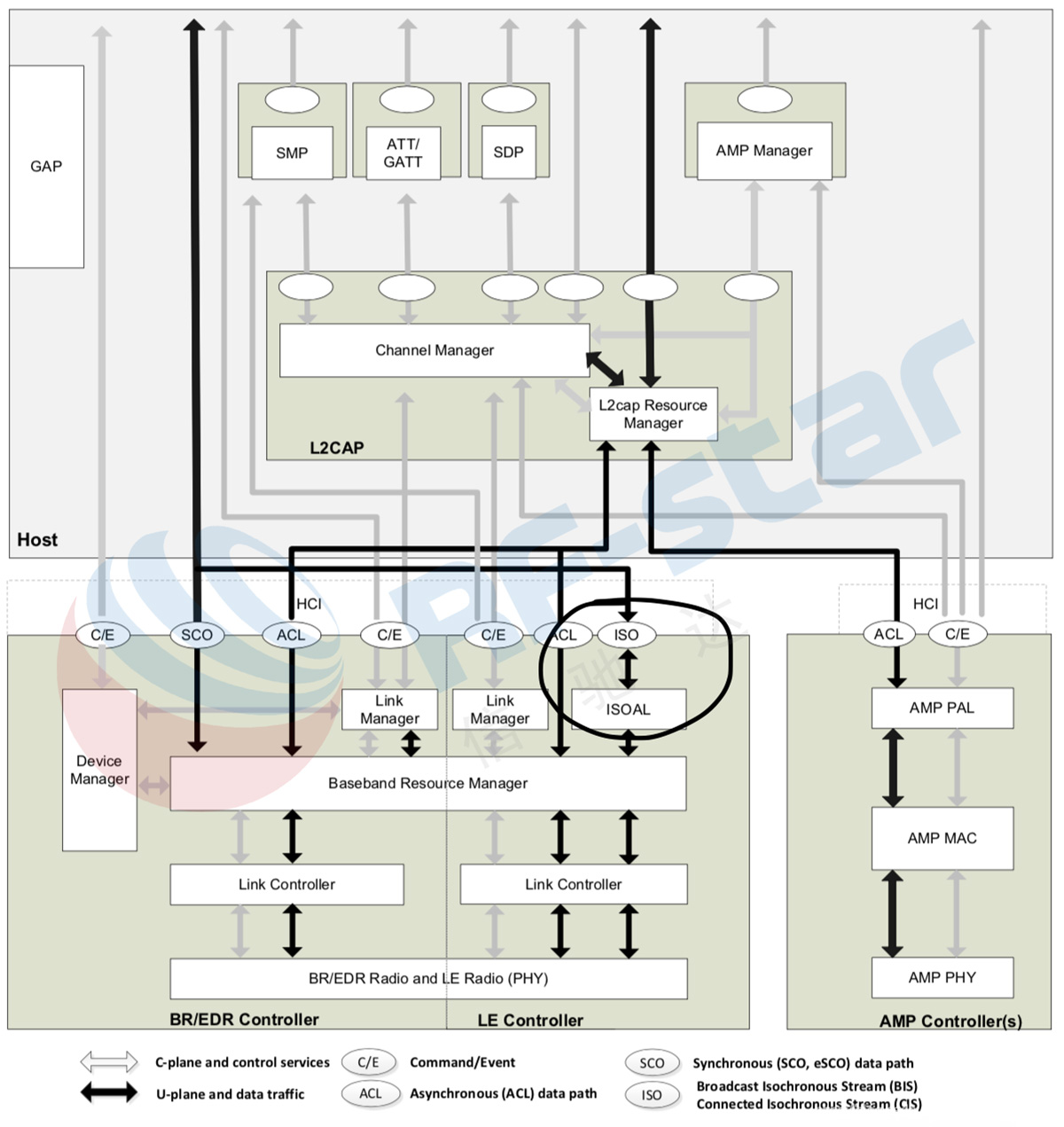
The ISOAL provides segmentation, fragmentation, reassembly, and recombination services for the conversion of the SDUs from the upper layer to the PDUs of the baseband resource manager and vice versa.
The ISOAL uses fragmentation/recombination or segmentation/reassembly operations to convert service data units (SDU) into protocol data units (PDU), or vice versa. The ISOAL controller accepts or generates SDUs through the supported 1M and 2M encoding PHYs. The maximum length of each SDU is the Max_SDU. Use the HCI ISO data packet to transmit the SDU to the upper layer or from the lower layer to the air.
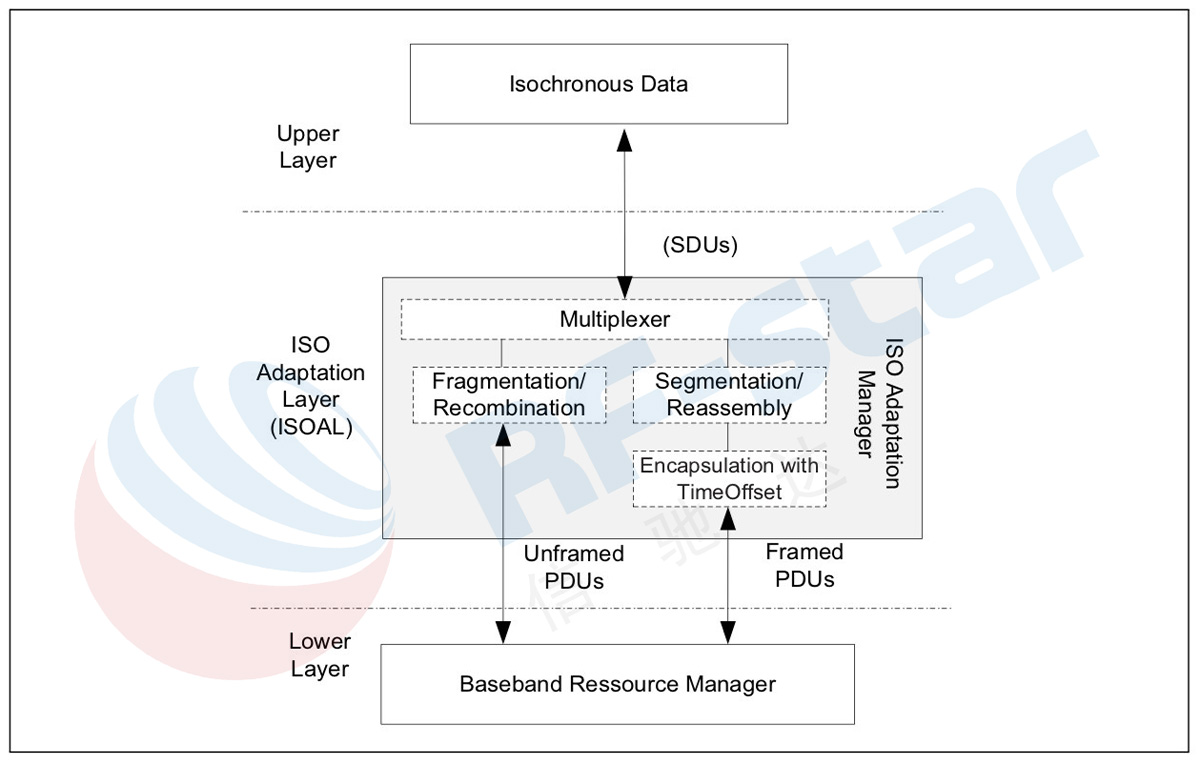
For the application requirements of LE connection mode and non-connection mode, the BT 5.2 LE AUDIO protocol specifies two data stream transmission framework models.
3. BT 5.2 Synchronous data stream transmission based on LE connection
Connection-oriented isochronous channels use the LE-CIS (LE Connected Isochronous Stream) logical transport and support bi-directional communication. A single LE-CIS stream provides point-to-point isochronous communication between two connected devices. A flushing period is specified for the LE-CIS logical transport. Any packet which has not been transmitted within the flushing period will be discarded.

CIS streams are members of groups called Connected Isochronous Groups (CIG), each of which may contain multiple CIS instances. Within a group, and for each CIS, there exists a schedule of transmission and receiver time slots known as events and subevents.
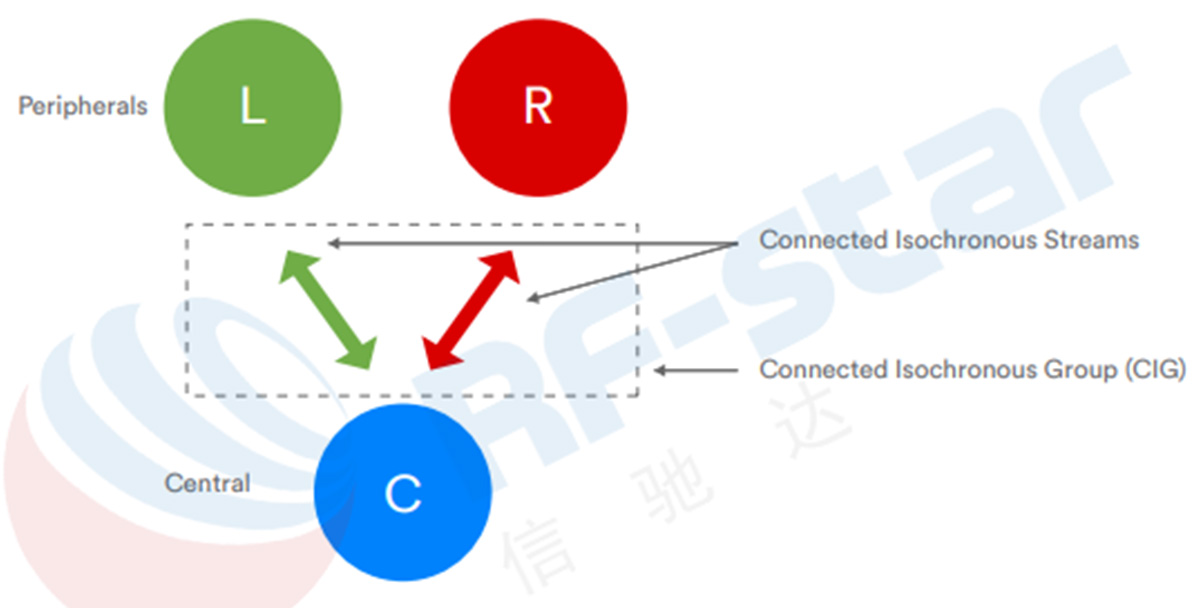
Each event occurs at a regular interval called the ISO Interval, which may be anywhere in the range 5 ms to 4 s in multiples of 1.25 ms. Each event is divided into one or more subevents. In a subevent based on isochronousdata stream transmission, the Master (M transmits once and the Slave (S)responds as shown below. Note that the channel is changed at each subevent.
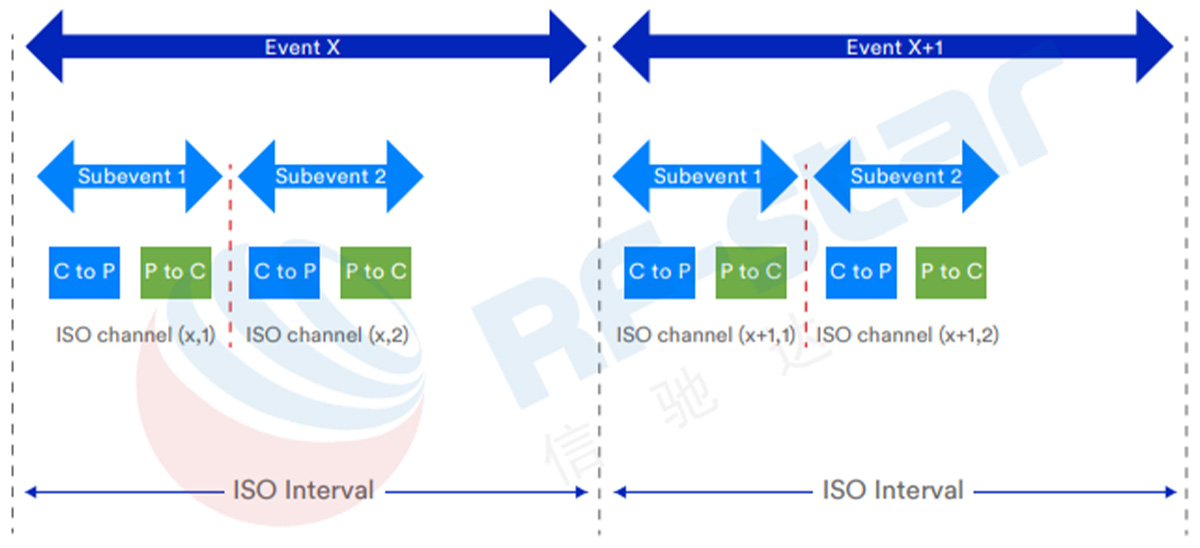
4. BT 5.2 synchronous transmission based on connectionless broadcast data stream
Connectionless isochronous communication uses Broadcast Isochronous Streams (BIS) and only supports unidirectional communication. Receiver synchronization needs to listen to master AUX_SYNC_IND broadcast data first. The broadcast contains a field called BIG Info. The data contained in this field will be used to synchronize with the required BIS. The new LE-broadcast control (LEB-C) logical link is used for Logical Link control requirements. For example, channel update, LE-S (STREAM) or LE-F (FRAME) synchronization channel logical link will be used for user data stream and data. The biggest advantage of BIS is that it can stream identical copies of data to multiple receiver devices.

Broadcast isochronous stream and groups only supports non-connected multi-receiver data stream synchronous transmission. It can be seen that the biggest difference between the BIS and the CIG is that BIS only supports unidirectional communication.
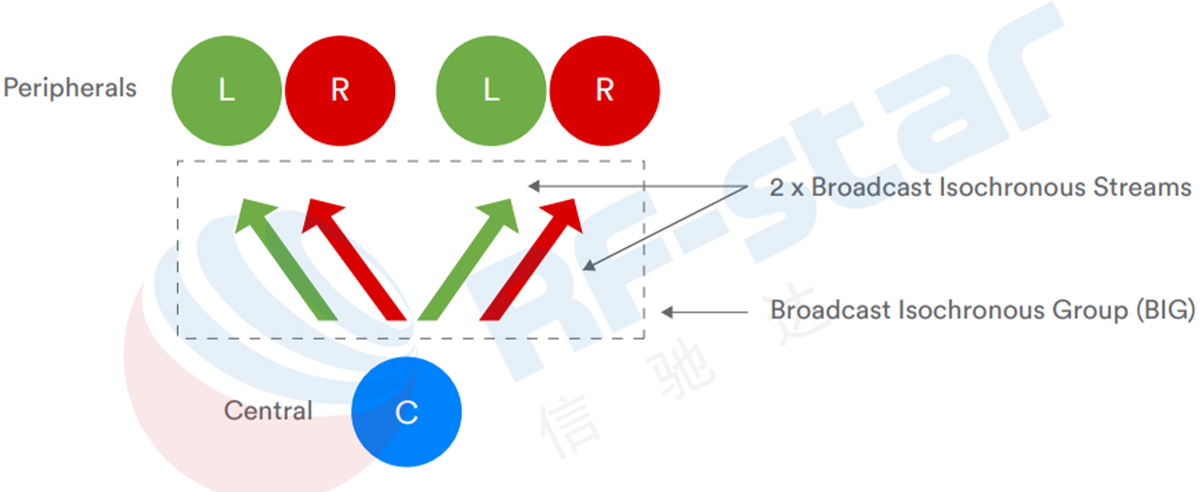
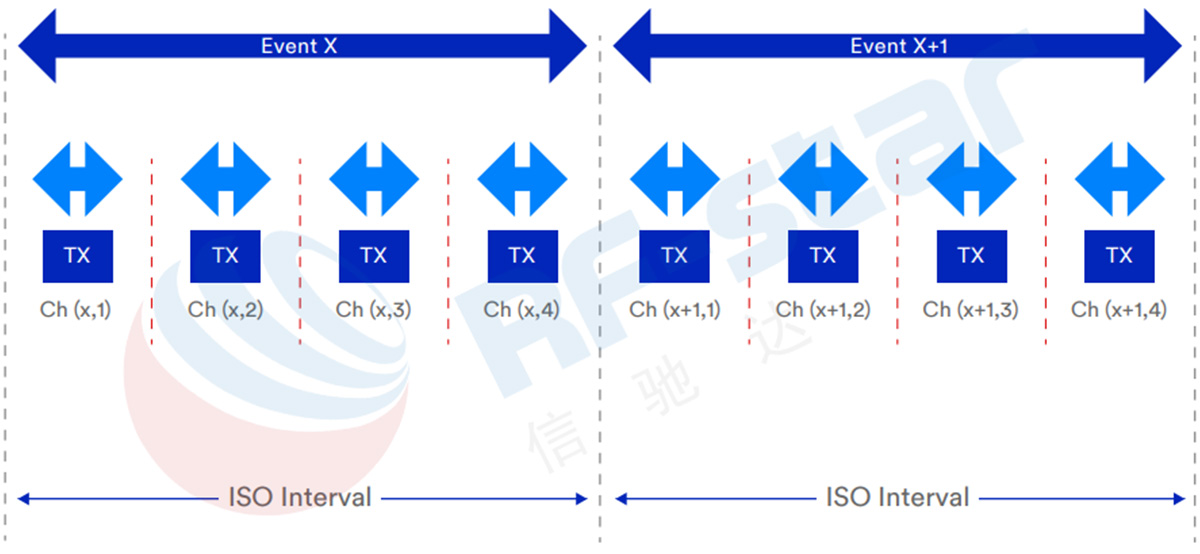
5. Features of BT 5.2 LE Audio
6. The Perspective of Author
It can be seen from the BT 5.2 core specification that the LE AUDIO function is an update of the software protocol stack, which is different from the BT 5.1 CODER PHY and LE 2M PHY that require hardware support. In other words, the major original manufacturers can directly support the Bluetooth LE AUDIO function by updating the SDK. It is undoubtedly exciting news.